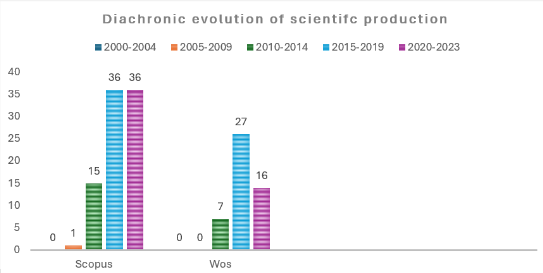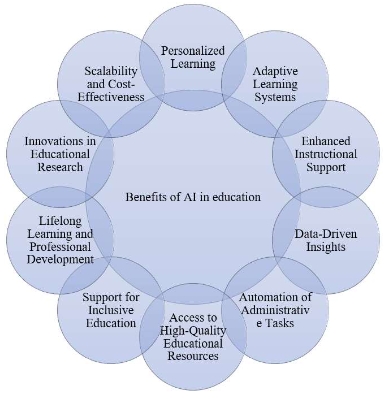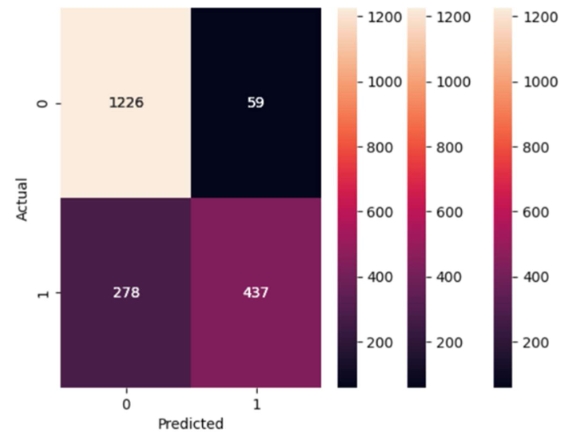Mastering minds: Unleashing the power of Neuro-Linguistic Programming in workplaces and schools
Abstract
Neuro-Linguistic Programming (NLP) intricately examines the visual, auditory, and kinesthetic representation systems, traversing the transformative trajectory from superficial to profound linguistic structures. This comprehensive paradigm elucidates the sophisticated cognitive processes through which the brain interprets events, molding emotions and behaviors through filters such as values, beliefs, memories, decisions, and meta-programs. As a potent catalyst for excellence and success, NLP empowers individuals and organizations to realize their aspirational objectives, nurturing flexibility, creativity, and autonomous behaviors. In educational contexts, practitioners adeptly employ NLP techniques to navigate conflicts, enhance leadership acumen, and inspire personnel toward organizational goals. NLP assumes a crucial role as a foundational element for ongoing learning, development, and the cultivation of dynamic capabilities within professional environments. Its applications extend beyond conventional business domains, seamlessly integrating with behavior modification models employed in psychotherapeutic settings. In the realm of child psychiatry, NLP addresses neurodevelopmental disorders, such as oppositional defiant disorder, with the potential to mitigate triggers in educational milieus. The Behavior Modification Model, anchored in the ABC (antecedents, behavior, and consequences) framework, meticulously shapes behaviors through positive and negative reinforcement and punishment. NLP is a versatile professional instrument applicable across personal development, therapeutic interventions, and diverse organizational landscapes. It is pivotal in elevating communication effectiveness, facilitating conflict resolution, and propelling individual and collective success to new heights. Applying NLP in schools proves invaluable by elevating teaching methodologies, cultivating effective communication, and nurturing essential skills for conflict resolution and leadership. Integrating NLP in educational settings can offer a holistic approach to learning, providing support for educators and students alike in navigating intricate situations and fostering an environment of continuous improvement. Implementing NLP should be approached with a balanced understanding of both its potential benefits and the need for empirical validation and ethical considerations.
References
[1]Sturt J, Ali S, Robertson W, et al. Neurolinguistic programming: a systematic review of the effects on health outcomes. British Journal of General Practice. 2012, 62(604): e757-e764. doi: 10.3399/bjgp12x658287
[2]Rayati M. Neuro-linguistic Programming and its Applicability in EFL Classrooms: Perceptions of NLP-Trained English Teachers. Language Teaching Research Quarterly. 2021, 24: 44-64. doi: 10.32038/ltrq.2021.24.03
[3]Nompo RS, Pragholapati A, Thome AL. Effect of Neuro-Linguistic Programming (NLP) on Anxiety: A Systematic Literature Review. KnE Life Sciences. Published online March 15, 2021: 496-507. doi: 10.18502/kls.v6i1.8640
[4]Gökdere Çinar H, Baykal Ü. Determining the effect of neuro‐linguistic programming techniques on the conflict management and interpersonal problem‐solving skills of nurse managers: A mixed methods study. Journal of Nursing Management. 2021, 30(1): 104-134. doi: 10.1111/jonm.13455
[5]Kotera Y, Sweet M. Comparative evaluation of neuro-linguistic programming. British Journal of Guidance & Counselling. 2019, 47(6): 744-756. doi: 10.1080/03069885.2019.1622075
[6]Kotera Y, Taylor E, Fido D, et al. Motivation of UK graduate students in education: self-compassion moderates pathway from extrinsic motivation to intrinsic motivation. Current Psychology. 2021, 42(12): 10163-10176. doi: 10.1007/s12144-021-02301-6
[7]El-Ashry MM. The importance of neuro linguistic programming skills as a communication tool in the workplace. Journal of Global Scientific Research. 2021, 6(1): 1108–1123. doi: 10.5281/jgsr.2021.7479557
[8]Zamfir CM. The NLP model of communication. BAS British and American Studies. 2015, 21: 225–228.
[9]Skinner H, Stephens P. Speaking the same language: the relevance of neuro‐linguistic programming to effective marketing communications. Journal of Marketing Communications. 2003, 9(3): 177-192. doi: 10.1080/1352726032000129926
[10]Hedayat N, Raissi R, Asl SA. Neuro-linguistic Programming and Its Implications for English Language Learners and Teachers. Theory and Practice in Language Studies. 2020, 10(9): 1141. doi: 10.17507/tpls.1009.19
[11]Mishra M, Satpathy SP, Dash RM, Mishra A. A study on the NLP dimensions of rapport building and its effect on interpersonal communication. Specialusis Ugdymas. 2022, 1(43): 1058–1066.
[12]Mathew AN, V. R, Paulose J. NLP-based personal learning assistant for school education. International Journal of Electrical and Computer Engineering (IJECE). 2021, 11(5): 4522. doi: 10.11591/ijece.v11i5.pp4522-4530
[13]Popescu CD. The path to outstanding education based on neuro-linguistic programming. Identities in the spotlight. Dialogue in a Global World. 2023, 21.
[14]Javadi Y, Asl SA. Neuro-linguistic Programming, Teacher’s Identity, and Teachers’ Effectiveness. Journal of Language Teaching and Research. 2020, 11(3): 389. doi: 10.17507/jltr.1103.07
[15]Ahmadzadeh S, Badami R, Aghaei A. The Effectiveness of Neuro-Linguistic Programming (NLP) on Shooters’ Mental Skills and Shooting Performance. Iranian Journal of Psychiatry and Behavioral Sciences. 2019, 13(3). doi: 10.5812/ijpbs.84124
[16]Espinales ANV, JAV. Moreno, neuro-linguistic programming in the teaching-learning process of English as a foreign language. PalArch’s Journal of Archaeology of Egypt/Egyptology. 2021, 18(4): 5566–5576.
[17]Hartati R, Meisuri, Ginting SA, et al. Tertiary Students’ Deficiency in English Emphatic Listening Skills of NLP Matching and Mirroring Technique. SALTeL Journal (Southeast Asia Language Teaching and Learning). 2023, 6(2): 1-8. doi: 10.35307/saltel.v6i2.110
[18]Shradha Bohra, Nikita Shukla. Cracking the code: A research study on neuro-linguistic programming (NLP) and its impact on organizational success. International Journal of Science and Research Archive. 2023, 9(2): 090-095. doi: 10.30574/ijsra.2023.9.2.0521
[19]Low DM, Rumker L, Talkar T, et al. Natural Language Processing Reveals Vulnerable Mental Health Support Groups and Heightened Health Anxiety on Reddit During COVID-19: Observational Study. Journal of Medical Internet Research. 2020, 22(10): e22635. doi: 10.2196/22635
[20]Kotera Y, Sheffield D, Van Gordon W. The applications of neuro‐linguistic programming in organizational settings: A systematic review of psychological outcomes. Human Resource Development Quarterly. 2018, 30(1): 101-116. doi: 10.1002/hrdq.21334
[21]Anjomshoa MR, Fahim Devin Y, Esmailzadeh MR, et al. Effects of neuro-linguistic programming course on job stress, positive organizational behavior and job motivation in physical education teachers. Pedagogy of Physical Culture and Sports. 2020, 24(3): 111-117. doi: 10.15561/26649837.2020.0302
[22]Etuka JM, Athota VS, Kearney S. How can emotional intelligence (EI) and neuro-linguistic programming (NLP) help leaders with the ability to deal with the impact of COVID-19? Knowledge Management Research & Practice. 2021, 19(4): 475-483. doi: 10.1080/14778238.2020.1860667
[23]Hassan FMM, Binzafrah F, Alqahtani M. A Structural Framework for Neuro-Linguistic Programming (NLP) and its Consequence on Leadership Succession Planning Strategy Applying to the Leaders of King Khalid University and Qualified Personnel for Leadership Position. Business Ethics and Leadership. 2022, 6(2): 24-43. doi: 10.21272/bel.6(2).24-43.2022
[24]Furduescu BA. Neuro-Linguistic Programming: History, Conception, Fundamentals and Objectives. Valahian Journal of Economic Studies. 2017, 10(1): 39-50. doi: 10.2478/vjes-2019-0004
[25]Rashmi K, Kataria A. Work–life balance: a systematic literature review and bibliometric analysis. International Journal of Sociology and Social Policy. 2021, 42(11/12): 1028-1065. doi: 10.1108/ijssp-06-2021-0145
[26]Cetin Y, Yayan EH. The effect of Neurolinguistic Programming practices on organizational citizenship behaviour of nurses: A randomized controlled study. Journal of Nursing Management. 2021, 30(2): 559-569. doi: 10.1111/jonm.13502
[27]de Rijk L, Gray R, Parker P. The rationale for a clinical evidence base. Neurolinguistic Programming in Clinical Settings. Published online December 15, 2021: 6-32. doi: 10.4324/9781003198864-2
[28]Scott HK, Jain A, Cogburn M. Behavior modification. In: StatPearls. StatPearls Publishing; 2023.
[29]Tyagi R, Ali SS, Vishwakarma S. Antecedents-behaviour-consequences (ABC) theory and effect of behaviour change training on energy conservation. Water and Energy International. 2022, 65(3): 30–35.
[30]Zhang X, Davarpanah N, Izadpanah S. The effect of neurolinguistic programming on academic achievement, emotional intelligence, and critical thinking of EFL learners. Frontiers in Psychology. 2023, 13. doi: 10.3389/fpsyg.2022.888797
[31]Hübner N, Wagner W, Zitzmann S, et al. How causal is a reciprocal effect? Contrasting traditional and new methods to investigate the reciprocal effects model of self-concept and achievement. Published online January 14, 2022. doi: 10.31234/osf.io/f3e8w
[32]Gran S. Using NLP (Neuro-Linguistic Programming) Methods in Teaching and Learning: Case Studies on the Potential and Impact of NLP Methods on Learning and Learners [PhD thesis]. Universität Duisburg-Essen; 2020.
[33]Keezhatta MS. The Impact of Neuro-Linguistic Programming on English Language Teaching: Perceptions of NLP-Trained English Teachers. International Journal of English Linguistics. 2019, 9(6): 454. doi: 10.5539/ijel.v9n6p454
[34]Rustan E. Language Learning With Neurolinguistic Programming: An Integrative Review. Journal of Language Teaching and Research. 2022, 13(6): 1251-1258. doi: 10.17507/jltr.1306.13
[35]Krijnen-de Bruin E, Scholten W, Muntingh A, et al. Psychological interventions to prevent relapse in anxiety and depression: A systematic review and meta-analysis. Vousden G, ed. PLOS ONE. 2022, 17(8): e0272200. doi: 10.1371/journal.pone.0272200
[36]Bojic S, Becerra R. Mindfulness-based treatment for Bipolar Disorder: A systematic review of the literature. Europe’s Journal of Psychology. 2017, 13(3): 573-598. doi: 10.5964/ejop.v13i3.1138
[37]Grasser LR, Marusak H. Strong mind, strong body: The promise of mind–body interventions to address growing mental health needs among youth. Mental Health Science. 2023, 1(2): 58-66. doi: 10.1002/mhs2.16
[38]Grant AM. Is it time to REGROW the GROW model? Issues related to teaching coaching session structures. Coaching Practiced. 2022, 29–40.
[39]Rajasekaran V. Neuro-Linguistic Programming (NLP) techniques: A therapeutic approach to enhancing the presentation skill of engineering students. IUP Journal of English Studies. 2020, 15(1).
[40]Farahani F. The Effect of Neuro-Linguistic Programming (NLP) on Reading Comprehension in English for Specific Purposes Courses. International Journal of Education and Literacy Studies. 2018, 6(1): 79. doi: 10.7575/aiac.ijels.v.6n.1p.79
[41]Marwa Manana, Diana Ghanem, Sarah Tarhini, et al. Assessment of primary schoolchildren’s fluid intelligence using Raven’s Colored progressive matrices: A pilot cross-sectional study in Lebanon. World Journal of Advanced Research and Reviews. 2023, 19(3): 317-326. doi: 10.30574/wjarr.2023.19.3.1801
Copyright (c) 2024 Razan Mhanna, Hiba Abdo, Diana Ghanem, Mouna Chehabeddine, Georges Hatem

This work is licensed under a Creative Commons Attribution 4.0 International License.









